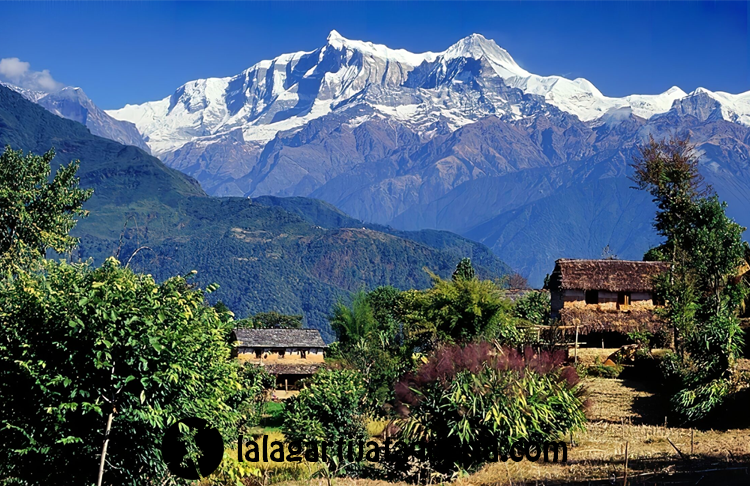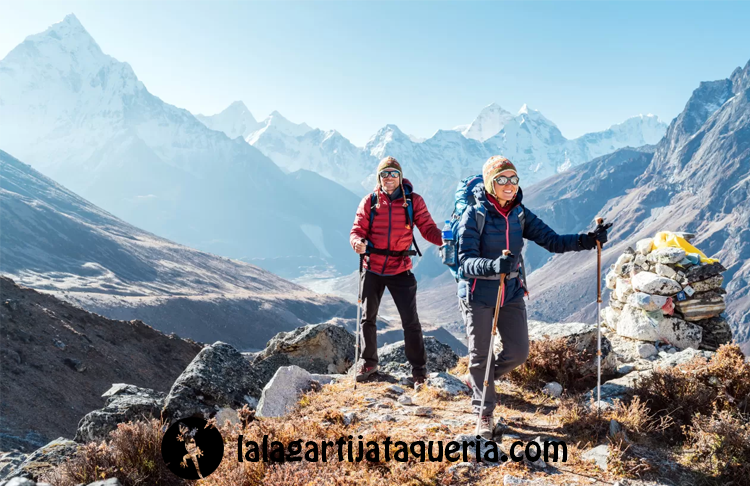Tag: Guide Nepal

Guide Voyage Nepal for Adventurers and Culture Lovers
Nestled between the majestic Himalayas, Nepal is a land of stunning landscapes, rich cultural heritage, and spiritual sanctuaries. This guide will help you navigate through the essentials for your guide voyage Nepal, from its breathtaking trekking routes to its vibrant cities. Whether you’re an adventurer seeking the thrill of Everest Base Camp or a cultural explorer looking to immerse yourself in ancient traditions, Nepal offers an unforgettable journey. Let’s dive into the reasons to visit this extraordinary country, when to plan your trip, and the best experiences waiting for every traveler.
Why Visit Nepal?

Nepal’s allure is multifaceted, drawing in nature lovers, spiritual seekers, and adventurers alike. The country’s most famous landmark is undoubtedly Mount Everest, the world’s tallest mountain, making Nepal a dream destination for trekkers. However, guide voyage Nepal goes far beyond trekking. From the serene beauty of Pokhara’s lakeside to the bustling life in Kathmandu’s Durbar Square, the country’s landscape is as diverse as its culture.
Nepal is also home to several UNESCO World Heritage Sites, including Lumbini, the birthplace of Buddha, and the Kathmandu Valley, renowned for its temples and ancient architecture. Spirituality is woven into everyday life, with Buddhist and Hindu influences apparent in every corner of the country. Moreover, festivals like Dashain and Tihar bring an explosion of color and tradition, making it an exciting destination year-round.
Top Experiences for Every Traveler
- Trekking in the Himalayas: For those craving adventure, no guide voyage Nepal is complete without experiencing the famous trekking routes. The Annapurna Circuit and Everest Base Camp treks offer some of the world’s most stunning landscapes. The autumn months (September to November) are ideal for clear skies and optimal trekking conditions.
- Cultural Exploration in Kathmandu Valley: Kathmandu is a historical and cultural hub. Durbar Square, Swayambhunath (Monkey Temple), and Pashupatinath Temple are must-see sites for understanding Nepal’s rich spiritual and architectural heritage.
- Wildlife Safaris in Chitwan National Park: Nature lovers will find Chitwan National Park a perfect retreat. The park offers opportunities to spot Bengal tigers, rhinos, and elephants while enjoying the subtropical forests of Nepal’s southern plains.
- Relaxing by Phewa Lake in Pokhara: If you’re looking for a peaceful escape, Pokhara’s serene beauty offers relaxation against a backdrop of the Annapurna mountain range. This city is also a gateway for many trekking routes but remains quieter and more laid-back than Kathmandu.
Best Time to Visit Nepal
The best time to embark on your guide voyage Nepal largely depends on your interests. For trekking, autumn (September to November) is widely regarded as the best season due to the stable weather, clear skies, and stunning views of the Himalayas. During this time, the temperatures are mild, making it ideal for outdoor activities like trekking and wildlife safaris.
Spring (March to May) is another great time, especially if you want to see Nepal’s trails lined with blooming rhododendrons. However, be prepared for warmer temperatures, particularly in the lowland areas like Chitwan and Lumbini. Summer (June to August) coincides with the monsoon season, making trekking more difficult due to muddy trails and landslides, although the Mustang region, which lies in the rain shadow, remains accessible. Winter (December to February) brings cooler temperatures and snow at higher altitudes but is still suitable for lower-elevation hikes and cultural exploration in Kathmandu and Pokhara.
Must-See Destinations in Nepal
When planning your guide voyage Nepal, there are several destinations that should be at the top of your list. Whether you’re seeking natural beauty, cultural experiences, or thrilling adventures, these must-see spots will leave you captivated:
- Kathmandu Valley: This cultural treasure trove offers a rich history through its ancient temples and palaces. Key spots to visit include Durbar Square, Swayambhunath (Monkey Temple), and Pashupatinath Temple. As a UNESCO World Heritage Site, the valley is a must-visit for anyone wanting to explore Nepal’s spiritual and architectural heritage.
- Pokhara: Known as the gateway to the Himalayas, Pokhara is famous for Phewa Lake, where you can enjoy a peaceful boat ride with the majestic Annapurna mountain range in the background. It’s also a popular starting point for treks like the Annapurna Circuit and Poon Hill.
- Chitwan National Park: For wildlife enthusiasts, Chitwan National Park offers the opportunity to spot Bengal tigers, one-horned rhinos, and elephants. Jungle safaris, canoeing, and bird watching are among the top activities here.
- Lumbini: This is the birthplace of Lord Buddha and a pilgrimage site for Buddhists from around the world. The Maya Devi Temple and the Peace Pagoda are essential stops on any visit to this spiritual landmark.
- Everest Base Camp: No guide voyage Nepal is complete without mentioning the world’s tallest peak. For trekkers, reaching Everest Base Camp is a monumental achievement, providing breathtaking views of the Himalayan range and a glimpse into the Sherpa culture.
Off the Beaten Path: Hidden Gems
For travelers seeking experiences beyond the usual tourist trail, Nepal offers several hidden gems that add a unique touch to your guide voyage Nepal:
- Rara Lake: Located in the remote northwest, Rara Lake is Nepal’s largest lake. Surrounded by lush forests and alpine meadows, this pristine area offers solitude, stunning scenery, and opportunities for trekking. It’s an ideal destination for those who want to escape the crowds and immerse themselves in nature.
- Tsum Valley: A hidden gem in the Gorkha region, Tsum Valley is a sacred Buddhist area that has remained relatively untouched by modernization. The valley is home to ancient monasteries, traditional villages, and breathtaking mountain views. A trek here provides a cultural experience that feels like stepping back in time.
- Bandipur: This charming hilltop town offers panoramic views of the Himalayas without the crowds of more popular destinations. Bandipur is known for its well-preserved architecture and traditional Newari culture. It’s an excellent spot to relax, hike, or simply enjoy the stunning landscapes.
- Upper Mustang: For those venturing beyond the usual paths, Upper Mustang is a restricted area that requires a special permit to visit. This region is known for its unique desert-like landscapes, ancient caves, and Tibetan Buddhist culture. Its isolation and mystery make it a hidden treasure in your guide voyage Nepal.
Practical Travel Tips for Nepal
To ensure a smooth and enjoyable journey, here are some practical travel tips for your guide voyage Nepal:
- Visa Requirements: Most travelers can obtain a visa on arrival at Tribhuvan International Airport in Kathmandu. Make sure to check the specific visa regulations for your nationality before departure.
- Altitude Sickness: If you plan on trekking in the Himalayas, it’s essential to acclimate properly to avoid altitude sickness. Take it slow, stay hydrated, and plan for rest days during your trek.
- Best Time to Visit: As mentioned earlier, the best time to visit Nepal is in the autumn (September to November) for clear skies and comfortable trekking conditions. Spring (March to May) is also a great time, particularly for viewing rhododendron blooms. Avoid the monsoon season (June to August) as heavy rains can disrupt travel plans.
- Packing Essentials: Depending on your itinerary, pack light but be sure to include layers for varying temperatures, sturdy hiking boots, a water purification system, and essential medicines (especially for altitude). Trekking poles and a down jacket are recommended for high-altitude treks.
- Currency: The local currency is the Nepalese rupee (NPR), and while credit cards are accepted in major cities, it’s advisable to carry cash when traveling to remote areas. ATMs are available in Kathmandu and Pokhara but may not be reliable in rural regions.
- Cultural Etiquette: Respect the local customs, especially in religious sites. Always remove your shoes before entering temples and dress modestly. It’s also considered polite to greet people with “Namaste,” the traditional Nepali greeting.
Incorporating these travel tips into your guide voyage Nepal will help you make the most of your visit while respecting the local culture and environment.
Trekking in Nepal: What You Need to Know

Trekking in Nepal is not just an adventure; it’s a journey through breathtaking landscapes, rich cultures, and ancient traditions. Known as one of the top trekking destinations in the world, Nepal offers trails ranging from leisurely walks to challenging climbs that cater to all levels of adventurers. Whether you’re aiming for the iconic Everest Base Camp or the stunning Annapurna Circuit, preparation is key to ensure a safe and rewarding experience. Understanding the essential aspects of trekking in Nepal will help you make the most of your guide voyage Nepal and truly appreciate the majestic beauty surrounding you.
Cultural Insights for Visitors
When trekking through Nepal, cultural sensitivity is crucial. Understanding local customs and traditions will enhance your experience and foster positive interactions with the local communities. Here are some cultural insights to keep in mind:
- Respect for Religion: Nepal is a diverse country with a mix of Hindu and Buddhist cultures. Temples and monasteries are sacred spaces; be sure to dress modestly and ask permission before taking photographs. When visiting these sites, remove your shoes and maintain a respectful demeanor.
- Greetings and Etiquette: The traditional greeting in Nepal is “Namaste,” accompanied by a slight bow with palms together. This gesture shows respect and is commonly used in both formal and informal interactions. Avoid using your left hand for greeting or handing items, as the left hand is considered unclean in many cultures.
- Local Customs: It’s customary to offer a small gift when invited into someone’s home. Food is often shared, and it’s polite to accept at least a small portion. Additionally, when trekking, follow local trails and respect private property to ensure the preservation of the landscape.
- Language and Communication: While Nepali is the official language, English is widely spoken in tourist areas. Learning a few basic Nepali phrases can go a long way in showing respect and enhancing your interactions with locals.
- Environmental Awareness: Many trekking routes pass through pristine natural areas. It’s essential to practice responsible trekking by not littering and following guidelines for waste disposal. Supporting local eco-friendly initiatives can also contribute positively to the environment.
Understanding these cultural nuances will not only enrich your guide voyage Nepal but also create a deeper connection with the people and places you encounter along the way. In the next section, we’ll delve into the practicalities of preparing for your trekking adventure.
As you plan your guide voyage Nepal, remember that this country offers a unique blend of natural beauty and cultural richness. Whether you’re trekking through the Himalayas or exploring ancient temples, Nepal promises an unforgettable experience. Its diverse landscapes, welcoming communities, and spiritual atmosphere make it a destination worth visiting, no matter your interests or level of adventure.
With proper preparation and an open heart, your journey to Nepal will be a rewarding one. From the towering peaks of the Everest region to the tranquil lakes of Pokhara, your guide voyage Nepal will leave you with memories that last a lifetime, and a deeper appreciation for the beauty and traditions of this remarkable country.